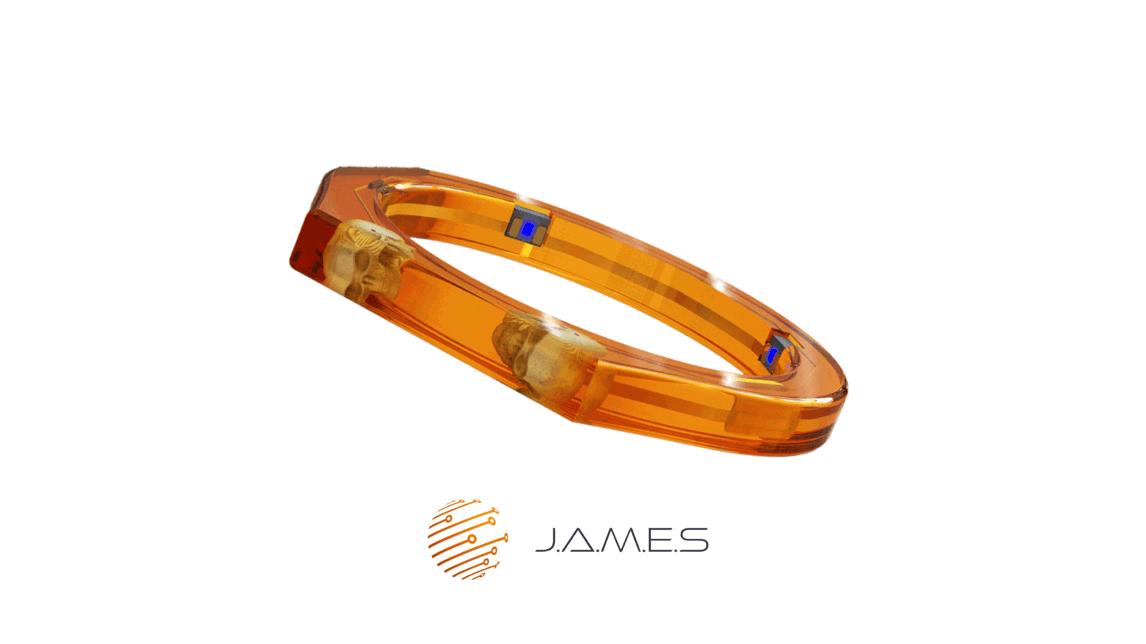AME Smart Ring Concept & Artwork
Concept
This AME design has the status of concept. A first design concept is established, a complete explanation of the targeted functionality is included, and the targeted printer technology has been provided.

Smart Rings and 3D Printed Electronics
Smart rings are becoming a necessary part of the health and fitness arena. They integrate seamlessly into the world of fashion with their state-of-the-art technology, keeping pace with the latest trend in tracking health metrics. The rings track all major health stats—heart rate, sleep, and activity levels—in real time, providing an elegant and easy way to be informed about your general well-being. Here is a new look into the innovative reasons why smart rings are the next best thing and how 3D printed electronics are taking them to the next level.
Functionality
All this magic that makes smart rings lies within an array of advanced sensors. PPG sensors monitor your heart rate, accelerometers keep track of your movements, and temperature sensors keep tabs on your body temperature. This is then relayed to a smartphone application, through which you can obtain detailed insights into your health.
Minaturization
One of the big things in smart ring technology is the use of 3D printed electronics. This will allow for miniaturization of traditional PCB designs, enabling the rings to become way smaller and more comfortable to wear. Despite being little, such rings are fitted with all the necessary sensors and electronics to monitor health effectively.
The advantages of smaller smart rings are obvious: they're more comfortable, aesthetically pleasing, and fit for a greater proportion of users. No longer bulky and cumbersome, this hardware no longer has to be brashly noticeable; it can be sleek and stylish and at the same time convey precise health data. This makes them ideal for everyone, regardless of hand size or style preference.
The Maintenance of Performance and Functionality
3D printed electronics make smart rings not only smaller but more functional. Through better sensor placement and utilization of space, these rings can provide even more precise health monitoring. As to the miniaturization process, it ensures that all the components fit in flawlessly, with their functionality even maintained at a level better than before.
Looking Ahead: Challenges and Opportunities
Although 3D printed electronics offer a long list of benefits, there are several challenges that remain yet to be addressed: from high production costs to special manufacturing requirements. However, the development of new technology will likely reduce these barriers, and this new paradigm in the electronics manufacturing field is probably democratized and spreads very quickly in the coming years. Smart rings are going to be even more impressive with 3D printed electronics at their core. This would mean a reduction in size, stylish designs, and comfortable wear on the human body. In such an evolving world of wearables, more and more groundbreaking innovations are yet to come, especially health monitoring technologies that make it easier than ever to track our well-being in a sleek and stylish way.
3D-Model Preview
Related Articles

Advancements In Aerospace: Ceramic Materials In Space Applications

Exploring Materials In 3D Printing: Metals, Ceramics, And Polymers








